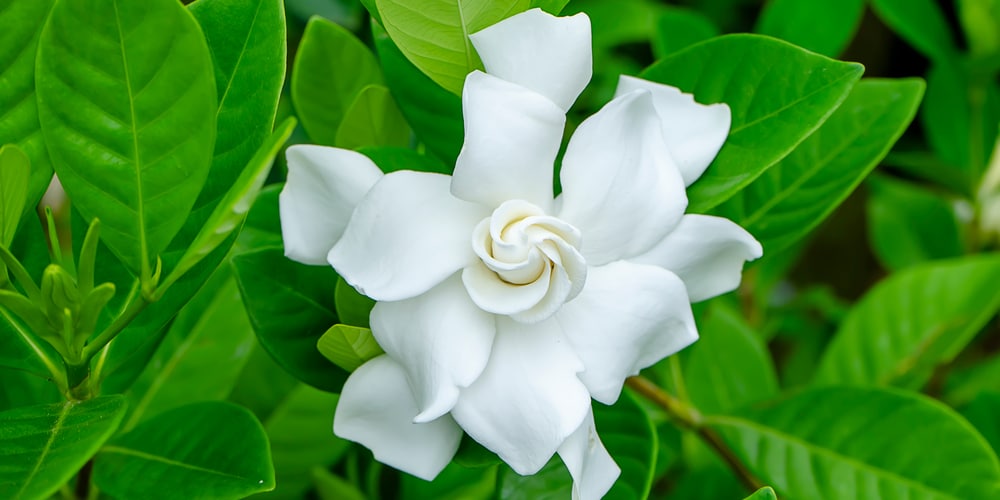Gardenias are stunning plants native to Africa, Asia, and the South Pacific. As you can expect, most varieties perform best in tropical or subtropical conditions. Usually, gardenias can’t be grown outdoors in USDA hardiness zones below 7. But if the thought of enriching your garden with stunning flowering plants excites you, don’t worry. You can grow gardenia even in zone 6. In this “Frost Proof Gardenia Zone 6” guide, we’ll talk about all you need to know about these varieties.
Frost Proof Gardenia Zone 6

Before we dig deeper into what gardenias might survive low temperatures, it is best to point out that the term frost proof refers to how tolerant to milder climates certain types of gardenia are, compared to other varieties.
While you can find species suitable to zone 6, you might not be able to grow gardenias outdoors in colder climates. A hard frost will kill your plants. Ideally, the optimal weather conditions for these plants are in USDA hardiness zones between 9 and 10. These areas provide the plants with enough warmth and humidity to thrive. However, keep reading to explore how you can grow gardenias in zone 6.
Chuck Hayes Gardenia
Chuck Hayes is a versatile species of gardenia that does well even in colder climates. Plant it in a container and locate it somewhere it can grow to its mature size. Indeed, these plants can grow as much as four feet in height.
Plus, its blooms are rich and fragrant: they will attract plenty of pollinators during the flowering season, contributing to making your yard more lively and attractive.
Kleim’s Hardy Gardenia
Unlike Chuck Hayes, which has a double blossom, this variety produces a single one that looks similar to an apple tree. These blooms’ scent is less intense than other gardenias but still incredibly attractive. Pick this variety to add an elegant low-growing shrub to your garden.
Gardenia Jasminoides (Frostproof Cape Jasmine)
The frostproof gardenia is probably the best option you have for growing this type of plant in zone 6. This variety has a higher tolerance to cold weather and produces large, white double flowers with narrow petals and thick and dense foliage. The fragrance is sweet and attracts plenty of bees and butterflies.
This plant blooms in early summer and will continue to produce flowers under optimal conditions. Contrary to other types of gardenia, the Cape Jasmine species can withstand frosts without suffering from severe damage. Place it under full sun or light shade for best results.
Because zone 6 summers rarely get too hot for gardenias to thrive, you don’t have to worry too much about direct sunlight. Indeed, this plant will perform better in sunny locations. Also, don’t forget to keep the soil moist. Add some mulch around your plant to increase the nutrient content and improve water retention.
Compared to other plants, Gardenia Jasminoides has a bushy habit. You can use it as a hedge plant or create attractive borders around your garden. Keep an eye out for pests: these plants might suffer from attacks from whiteflies, scales, aphids, and spider mites. Consider planting it next to a suitable companion plant that might scare these harmful insects away.
Frost Proof Gardenia Zone 6: The Bottom Line
While there are only a few varieties of gardenias that will withstand low temperatures and cold weather, that shouldn’t stop you from planting these stunning flowering shrubs in your garden.
The types we included in this list will survive in zone 6 and thrive if you provide them with what they need and ensure you meet their basic requirements. While these plants usually like moisture, too much rain can damage their roots. Protect them from overwatering and plant them somewhere you can protect them in case of wet days. You will also have to provide regular pruning to ensure optimal air circulation around the plant and prevent fungal infections from spreading.
Before planting gardenias in your garden, make sure you know what pH your soil is. These plants do best in slightly acidic conditions. Make the necessary amendments if your ground is alkaline. Take your time to prepare the planting site and recreate optimal conditions for your plants to thrive. The pH should be between 4.5 to 5.5: add pine mulch or peat moss to increase acidity with organic material.
Related Article: Gardenia Companion Plants
